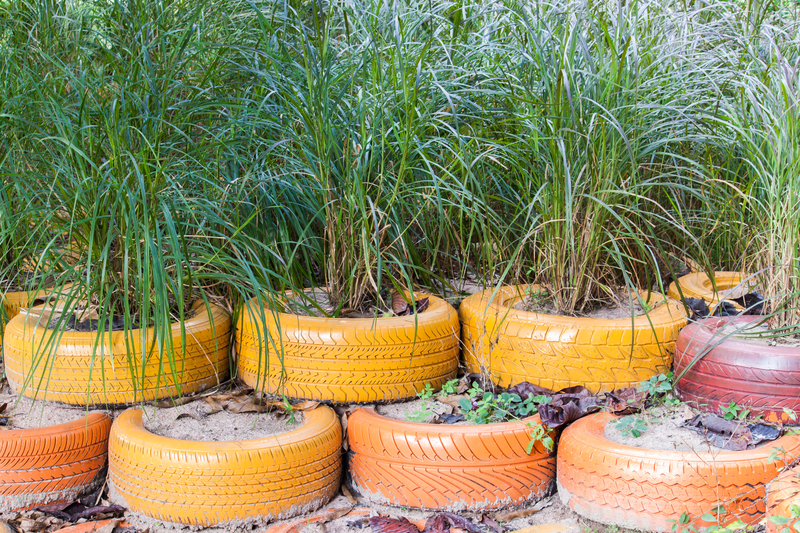How to Ensure Your Cookware Disposal Is Environmentally Friendly
Every home chef, at some point, faces the inevitable question: What should I do with old pots, pans, or kitchenware that's past its prime? Throwing away cookware isn't just wasteful--it's potentially harmful to the environment. In this guide, we'll walk you through the most environmentally responsible ways to dispose of your old cookware, ensuring your choices are kind to the planet and maybe even beneficial to your community.
Why Environmentally Friendly Cookware Disposal Matters
Disposing of cookware improperly leads to increased landfill waste, potential soil and water contamination, and higher demand for raw resources. Eco-conscious cookware disposal not only conserves resources but also reduces your ecological footprint--making a difference for future generations.
Common Cookware Disposal Mistakes
- Tossing old pots and pans in the household trash--ends up in landfills where it may take centuries to degrade.
- Burning Teflon/nonstick cookware--releases toxic fumes, harming air quality and your health.
- Discarding usable cookware, missing out on opportunities to help others or repurpose items creatively.

Assessing Your Old Cookware: Reuse, Recycle or Dispose?
Before throwing anything away, consider the condition and material of your cookware:
- Lightly used cookware: Perfect for donation.
- Cookware with damaged coatings or warped material: Candidates for recycling or upcycling.
- Completely unusable pieces: Seek eco-friendly disposal through specialized waste centers.
Understanding Cookware Materials
Cookware is made from various materials, and each requires a different approach for eco-friendly disposal:
- Aluminum - Common and widely recyclable.
- Stainless Steel - Also highly recyclable.
- Cast Iron - Durable and valuable as scrap.
- Copper - Highly sought after for recycling; never throw in the trash.
- Nonstick/Teflon - Needs special handling due to chemical coatings.
- Ceramic and Glass - May not be accepted in every recycling program, so check local guidelines.
How to Dispose of Cookware in an Environmentally Friendly Way
Let's discuss eco-friendly cookware disposal in depth, tailored for each major category and disposal method.
1. Donate Usable Cookware
If your cookware is still functional, donation is always preferable. Many individuals and organizations are in need of gently used kitchenware:
- Charity shops and thrift stores - Organizations like Goodwill, Salvation Army, or local nonprofits.
- Homeless shelters and food banks - Often welcome kitchen items for daily meal preparation.
- Community centers or schools - May use surplus cookware for educational purposes or teaching kitchens.
Always clean and inspect your cookware before donating.
2. Recycle Metal Cookware
Metal recycling is one of the greenest disposal routes for cookware made from:
- Stainless steel
- Aluminum
- Copper
- Cast iron
Here's how to do it the right way:
- Remove all non-metal components such as plastic handles or glass lids.
- Consult your local recycling center--many centers accept metal cookware, but rules differ by city.
- Scrap yards are an option if your cookware is heavily damaged--they may even pay for valuable metals like copper or cast iron!
Recycling cookware this way ensures these materials get a new life, reducing the need to extract more resources.
3. Environmentally Friendly Disposal of Nonstick and Teflon Cookware
Nonstick and Teflon-coated pots and pans pose special challenges for eco-friendly disposal:
- Do not place them in standard recycling bins.
- Contact your city's waste management facility for advice on hazardous waste collection days.
- If possible, remove the nonstick coating (by carefully sanding or scraping) before recycling the base metal--only if it's safe and allowed by your recycling center.
Never burn nonstick pans or Teflon products! Harmful chemicals can be released into the atmosphere.
4. Proper Disposal of Ceramic and Glass Cookware
Ceramic and glass items require careful handling:
- Check your local recycling guidelines--not all centers accept heat-resistant glass or ceramics in household programs.
- Broken pieces should be safely wrapped before disposal to prevent injury.
- Some ceramic cookware can be donated or used as planters and garden containers.
5. Upcycle or Repurpose Old Cookware
One of the most eco-friendly methods is to repurpose old pots and pans in creative ways:
- Turn large pots or frying pans into herb gardens or flower planters.
- Transform lids or cast iron skillets into decorative wall art.
- Use sturdy metal baking trays as magnetic boards in the kitchen or office.
Upcycling not only prevents waste but also adds unique, personal touches to your home or garden.
Sustainable Cookware Choices for the Future
The best way to ensure eco-friendly cookware disposal tomorrow is to make sustainable choices today:
- Invest in durable materials like cast iron or stainless steel that last for generations.
- Avoid nonstick coatings when possible--opt for seasoned iron or ceramic alternatives.
- Choose brands committed to recycling programs--some even take back old cookware for repurposing or recycling.
Brands with Take-Back or Recycling Programs
Some cookware brands recognize the need for eco-responsible disposal:
- GreenPan: Offers recycling for their nonstick pans at select locations.
- Le Creuset: Sometimes collects old cookware for ecological recycling events.
- Calphalon: Has previously run recycling initiatives--check for the latest company programs.
Contact your manufacturer or visit their website for updates on cookware recycling programs.
FAQ: Eco-Friendly Cookware Disposal
-
Can I put pots and pans in my local curbside recycling bin?
Rarely. Most curbside recycling doesn't accept cookware due to size and material complexities. Instead, use local recycling centers or scrap yards. -
What if my cookware is rusty or has peeling nonstick coating?
Remove what you can (like non-metal parts), then take it to a scrap metal recycling center or hazardous waste disposal facility. -
Are there any buy-back programs for cookware?
Some retailers or brands occasionally run trade-in events--always check with your cookware brand or local store. -
Is it safe to give away old nonstick pans?
Be cautious: only donate nonstick pans if they're in excellent condition with no flaking or damage to the coating.
Tips for Minimizing Cookware Waste
- Buy high-quality, long-lasting cookware to reduce replacement frequency.
- Avoid single-use or low-quality kitchenware that breaks easily or has a short lifespan.
- Regularly clean and maintain your pans; proper seasoning extends the life of cast iron and steel cookware.
- Share or trade with neighbors before disposing of cookware you no longer need.

Conclusion: Your Impact on a Greener Kitchen
Disposing of cookware in an environmentally friendly way requires only a bit of extra effort, but the positive impact is huge. By following these eco-friendly cookware disposal methods--donating, recycling, repurposing, and opting for responsible brands--you'll support a cleaner environment and a stronger community.
Next time you find yourself with old or damaged kitchenware, remember: Every pot, every pan, and every lid has more than one life. Make it count--for your kitchen and the planet.
Further Resources
- Earth911: How to Recycle Cookware
- EPA: Reduce, Reuse, Recycle
- Goodwill Donation Center Locator
- Salvation Army: How to Donate
Share these tips with family and friends, and let's all cook up a greener world--one pan at a time.